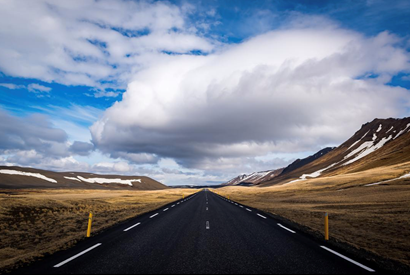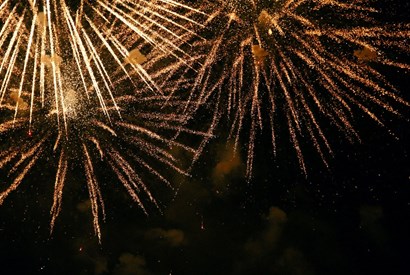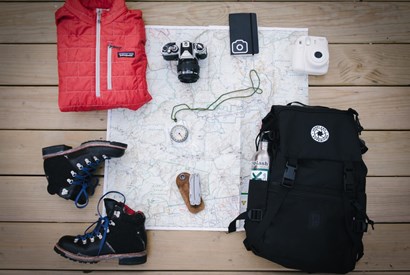Summer in Iceland: Where to Go and What to Do
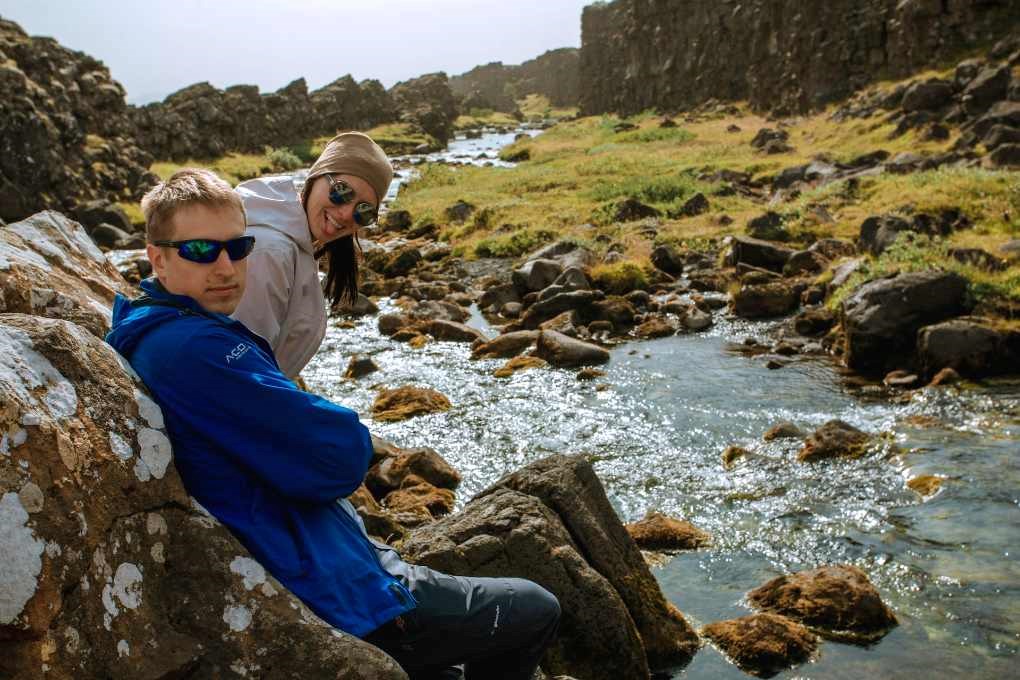
Summer is peak travel season in Iceland, and for good reason! During the summer, Iceland’s weather turns mild and the temperatures warm. The sun stays out well into the night. Areas of the country that are closed off in the winter due to snow, ice and other hazards are open for exploring.
In short, you can travel across all of Iceland with relative ease, and you can do so comfortably and safely, so long as you follow the right precautions. If you’re planning a summer trip to Iceland, here’s what you need to know, including how to get around, what to expect and the top things to do in Iceland in summer.
What to Expect from Summer in Iceland
Summer in Iceland is incredibly unique. Iceland experiences the season like no other country does. The island comes alive with greenery and wildlife, roaring waterfalls and bubbling hot springs, a far cry from the blankets of snow, ice and glaciers that covered the country just a few months before.
While Iceland’s summer is a short season, the days are long, with sunlight filling the skies nearly around the clock, and peak summer hours in June and July. With more hours in the day to experience the great outdoors, you’ll find that you can do more in Iceland’s short summer season than you might think.
Plus, you’ll be comfortable in Iceland’s balmy summer weather. The temperatures aren’t hot, but aren’t chilly, either. Most often, temperatures hover around the Celsius teens or the Fahrenheit 50s.
Planning on visiting Iceland during a specific summer month? Check out our more tailored guides on what to expect in Iceland in June, July and August. You can also learn more in our guide to Iceland’s weather.
How to Visit Iceland in the Summer: Take a Road Trip
Renting a car and seeing Iceland by road trip is the best way, hands down, to experience the country in the summer months. It’s easy to get around and you’ll be able to explore all of Iceland’s best landscapes, easily and safely, thanks to the agreeable weather.
Plus, renting a car in Iceland is far better than any other mode of Icelandic transportation. Public transportation in the country is minimal, unless you’re only staying in Reykjavik. There’s no train service between cities, like what you might find in European countries, and many top attractions are located in rural areas that are only accessible via car. While you can find guided tours to take you to some of these attractions, they’re not personalised, can be expensive, and are often not private.
So, your first step? Get on a plane and fly into Keflavik. Your next step? Rent a car. Lava Car Rental will pick you up at the airport and then take you to our Keflavik office, just a short drive away, where we’ll outfit you with your rental car of choice. Then, it’s off you go on your Iceland adventure!
Where to Go in Iceland in the Summer
Where you can go in Iceland in the summer will depend on how long you have in the country. You may only have a few days and might need to keep your explorations closer to the airport. We recommend spending at least seven days in Iceland, for a summer trip that allows you to see as much as possible.
Here are some of our top recommendations.
The Ring Road
If you have a week, you can see the Ring Road, so long as you keep things quick. However, ideally, you’d take at least 10 days to really see the Ring Road at a more leisurely pace.
The Ring Road is, just as it sounds, a road shaped like a ring that encircles the entire country. When you take a road trip on this well-maintained, often-travelled road, you get to see a little bit of all of Iceland, without needing to take many detours. The road is more than 1,300 kilometres — or more than 800 miles — long and will take you to towering, famous waterfalls; to black sand beaches in the south; and to national parks and volcanoes. If there’s a part of Iceland that you’ve seen in photographs and thought, “Wow, I’d really love to see that one day!” then you can probably see it during a Ring Road road trip.

As mentioned, this is a well-maintained, often-travelled road, so you won’t need to worry about poor road conditions during your trip, especially during the summer.
Convinced and want to know what exactly to see on a Ring Road road trip? Here are the top things to see on the Ring Road.
The Westfjords
As this area is difficult or impossible to access during the winter, summer is the perfect time to visit the Westfjords of Iceland. A bit of a detour off the Ring Road, this remote area is known for its great wildlife watching and hiking. If you call yourself a nature lover, you have to go to the Westfjords.
Favourite spots to visit in the Westfjords include Hornstrandir Nature Reserve, the Latrabjarg Cliffs and Dynjandi Waterfall.
Even though the Westfjords are passable during the summer months, we still recommend you rent a 4x4 car if your road trip takes you here, as the roads are often gravel.
Check out our full guide to the Westfjords for more.
The Highlands

You actually can’t visit the Highlands at all during the winter, spring or fall, so that makes visiting the Highlands easily one of the most interesting things to do in Iceland in summer. It’s the only time you can do it!
This rugged central area is filled with picturesque mountains, roaring rivers and all-gravel roads. The region is completely impassable in the winter due to the rugged terrain, and even in the summer, it’s illegal to visit the Highlands without a 4x4 vehicle, all due to the roads’ rugged nature.
Visiting the Highlands allows you to see some of the less touristy areas of Iceland, as not every tourist wants to go so far off the beaten path, and favourite activities include scenic hikes and camping. You can even go on long hikes in the Highlands in the summer, without worrying about it getting too dark, as the midnight sun means you’ll have extended daylight, round-the-clock in June and July.
More specific locations to visit within the Highlands include Landmannalaugar, Kerlingarfjöll and Thorsmork.
Landmannalaugar is an area known for its rhyolite mountains, which are multicoloured and display pink, green and yellow hues. The area also boasts a lot of hot springs, as well as hiking trails. A famous Icelandic hiking trail known as Laugavegur starts here. You can find hikes of varying lengths and difficulty. Other activities include horseback riding, nature and wildlife photography and fishing.
Thorsmork is a unique spot that is also highly popular with hikers, and is known as the Valley of Thor. The scenic area boasts gorgeous ridgelines and very dramatic scenery. You can explore much of Thorsmork with a 4x4 vehicle, but certain spots are only accessible via a tour bus that’s been outfitted to take you across a river.
Lastly, Kerlingarfjoll is part of the Icelandic volcanic belt and offers more hiking, hot springs and picturesque scenery.
Again, do keep in mind that if you want to visit the Highlands, you will need a 4x4 vehicle, as required by Icelandic law. This law is entirely for your safety, as trying to traverse the F-roads without a 4x4 vehicle could put both the vehicle and you and your passengers in danger.
Need more ideas for where to go when you visit Iceland in the summer? Check our suggested itineraries for 7 days in Iceland, 10 days in Iceland or 14 days in Iceland
Best Summer Activities in Iceland
No matter where you go in Iceland during your summer trip, no matter how long you stay, there are a few things to do in Iceland in the summer that you won’t want to miss.
Hiking
Even if you don’t consider yourself an avid hiker, you may want to still plan a short hike for your Iceland summer trip. Iceland is known as one of the most beautiful countries in the world, thanks to its range of natural landscapes, and much of this scenery can only be seen on foot. So, strap on those hiking boots, grab your trekking poles and see what awaits. There are hiking trails for every level of fitness and every interest.
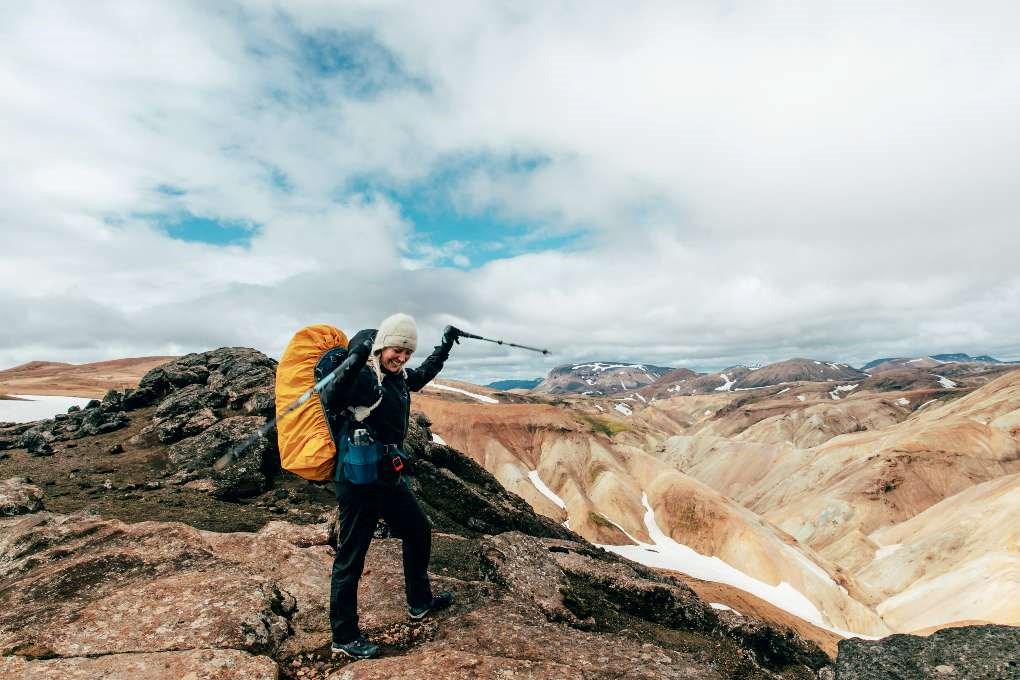
Not sure where to start? These are some of the best hikes in Iceland.
Camping
Camping in Iceland doesn’t have to mean roughing it or sleeping on the ground in the tent. In fact, camping can be quite comfortable during the summer months, and you can enjoy nearly all your normal creature comforts, when you rent a campervan.
Campervans are mid-size vans that have been outfitted to offer sleeping and storage spaces in the back, and that come with all you need to cook, eat and stay warm and cosy inside your van, regardless of the weather. Depending on the campervan you rent, you may also get a kitchenette and bedding.

When you rent a campervan for an Iceland road trip, you never have to worry about finding a hotel to stay in, and you can keep exploring for longer, as your accommodations are always with you. Not to mention, your accommodations and your rental costs will be bundled into one fee, making a campervan a great option for budget travellers.
Do note, though, that you can’t just pull off the road anywhere to camp in Iceland. You’ll need to find an Icelandic campsite. There are many, many campsites throughout the country, so this won’t be a problem. Icelandic campsites often offer amenities such as restrooms and showers, water hookups, laundry facilities and WiFi.
Intrigued? Here’s everything you need to know about camping in Iceland.
Whale Watching and Birding
Wildlife watching in general is a popular activity in Iceland in the summer. However, whale watching and seeing the puffins are particularly fun activities.
During the summer, you can spot more than 20 different types of whales, including blue whales, off the Iceland coast. Additionally, going whale watching is incredibly easy on your part. You can find tours that leave right from Reykjavik, so you can go out with little prep. If you don’t plan to be around Reykjavik, you can also find whale watching tours that leave from Akureyri and Husavik.
If you want to see the puffins, though, the best place to go is the Westfjords and the Latrabjarg Cliffs, which is the most famous place to see Icelandic puffins. Other popular spots include the Westman Islands, Tjornes Peninsula and Akurey and Lundey.
Find the best whale-watching tours here.

Hot Spring Bathing
This is an activity that you can enjoy just about any time of the year in Iceland, but you may prefer it during the summer months, when the extra daylight hours give you plenty of time to do so, as well as when the temperatures are a bit more agreeable. While sitting in a hot spring while it snows is fun, getting out of the hot spring in the snow is not.

You’ll find hot springs scattered all across Iceland. Some are more remote and undeveloped, and you’ll have to hike a bit to reach them. Some have been developed extensively, and are within spas that charge an entrance fee. Whichever you prefer, you’ll find them on our list of some of the best hot springs in Iceland.
Horseback Riding
Why see Iceland on foot or on an ATV, when you can see Iceland on horseback? With the country’s range of different horseback riding tours, you can do exactly that.

Not only does this activity allow you to see the landscapes in a unique way, but it also has a cultural element as well, as you’ll get up close and personal with Icelandic horses, a breed specific to the island and that plays an important role in the country’s history.
Find the best horse-riding tours here.
Snorkel Between the Tectonic Plates in Silfra
There’s snorkelling and then there’s snorkelling in Iceland. Most travellers think of snorkelling as something you do off the coast of a tropical island, looking at coral and brightly coloured fish, but in Iceland, you can see something totally different when you head beneath the waves. In Iceland, you can snorkel between the Earth’s tectonic plates, right inside the Silfra Fissure, known for its extremely clear waters.

The Silfra Fissure is near the Golden Circle, so you can easily add this activity onto your itinerary if you’re already taking a Golden Circle road trip.
Check the snorkeling and diving tours in Silfra here.
Explore Iceland’s Volcanoes

Iceland’s volcanoes regularly make the news and, while they may seem scary and dangerous at first — and some of them definitely can be — that doesn’t mean you can’t visit a few of them during your trip. Favourites with travellers include Thrihnukagigur, and Eyjafjallajokull. The former is viewable via tours, while the latter can be visited on your own and is quickly reachable if you’re staying in Reykjavik.
For more ideas, check out our full guide to seeing volcanoes while in Iceland.
You can book your volcano tours here.
Enjoy the Summer Events in Iceland
Experience Iceland like a local, when you join in on some of our favourite summer events. Depending on when you visit, you may be able to catch some of the most widely celebrated festivals and holidays.
For example, Iceland’s National Day falls on June 17 and celebrates Iceland’s independence. You’ll find lots of activities occurring to celebrate the holiday, no matter where you are in the country. Parades and parties are on tap in Reykjavik.

The Secret Solstice Festival also takes place in Reykjavik during the summer months, and encompasses art, music and more.
You can plan a trip based around some of Iceland’s best events, by checking out our guide to the top 13 annual traditions of Iceland.
What to Keep in Mind When Planning an Iceland Trip
Have a few ideas as to what you’d like to do during your summer trip to Iceland? No matter where you go, no matter what you do, keep a few of our top travel tips in mind.
1. Don’t try to do it all.
Iceland has a lot to offer, but remember that this is an entire country. While it may seem like a small, singular island, it’s actually pretty big and you probably won’t be able to do everything you want to do, during one trip. Choose to do the top things on your list, and then consider making a return trip for anything you didn’t get to do during your first trip.
2. Keep in mind that not everything is open all the time.
When considering activities, remember that Iceland is a very seasonal destination. We’re heavily dictated by the weather, so some activities are completely unavailable in the summer and, likewise, some are completely unavailable in the winter. While all of the above discussed activities are possible in the summer, others that we didn’t mention are not, such as seeing the northern lights.
3. You may need special equipment.
As mentioned, if you want to visit some areas of Iceland, you may need to plan to have special equipment. For example, it’s illegal to visit the Highlands without a 4x4 vehicle.
4. You may need a tour guide.
Along these lines, you may also need a tour guide. Some activities simply aren’t accessible to the public without one, such as visiting certain volcanoes or caves. Even if you don’t need a guide to do something, if you feel like it’s out of your normal comfort zone, like going on a rigorous hike, consider hiring a guide anyway, for safety’s sake. Iceland may be beautiful, but it can also be rugged and treacherous.
Will We See You in Iceland This Summer?
While there’s no bad time to visit Iceland, there’s just something about summer in Iceland that’s simply amazing. There’s so much to do and see, and you can see and do all of it so easily, thanks to the more agreeable weather and cleaner roadways. There’s no better season for a road trip or camping holiday.
For all of the above, let Lava Car Rental outfit you with the perfect vehicle to get you around. Whether you need to rent a campervan or a 4x4 to see the Highlands, or just a 2WD compact vehicle to get around Reykjavik in a budget-friendly manner, we have you covered.
Check out our full lineup of vehicles and don’t hesitate to reach out for more info.

